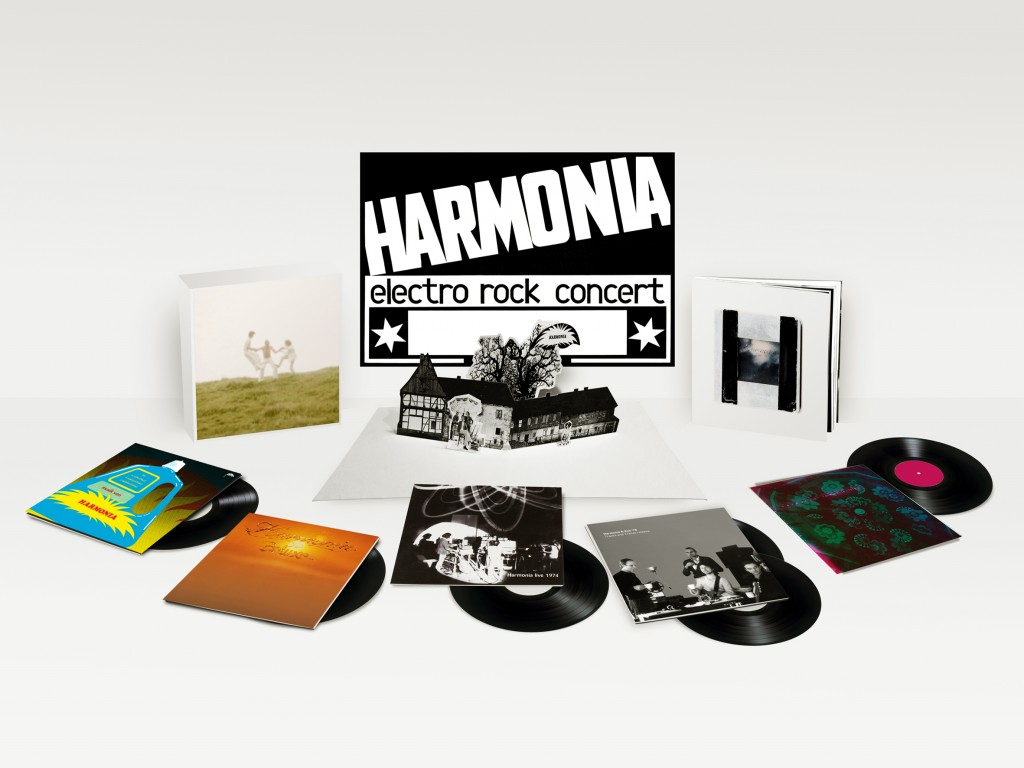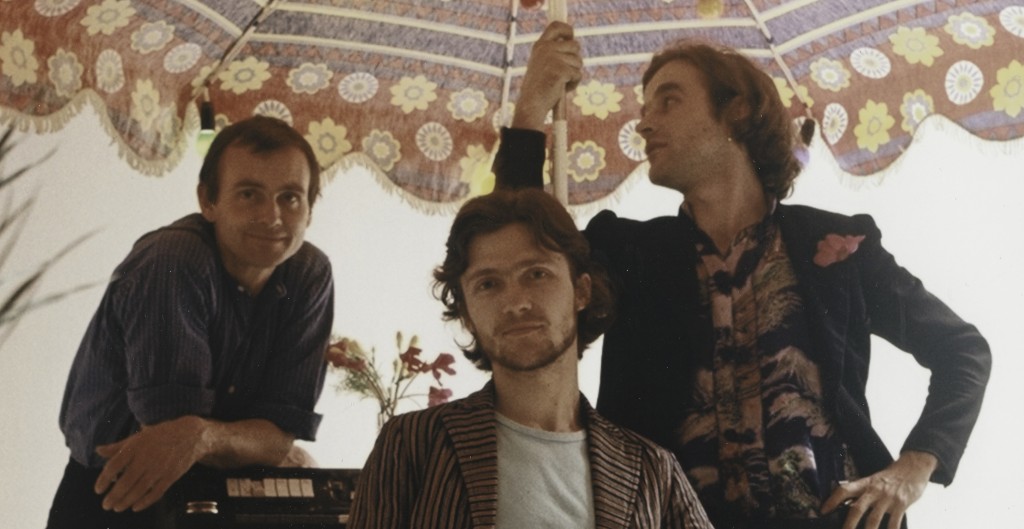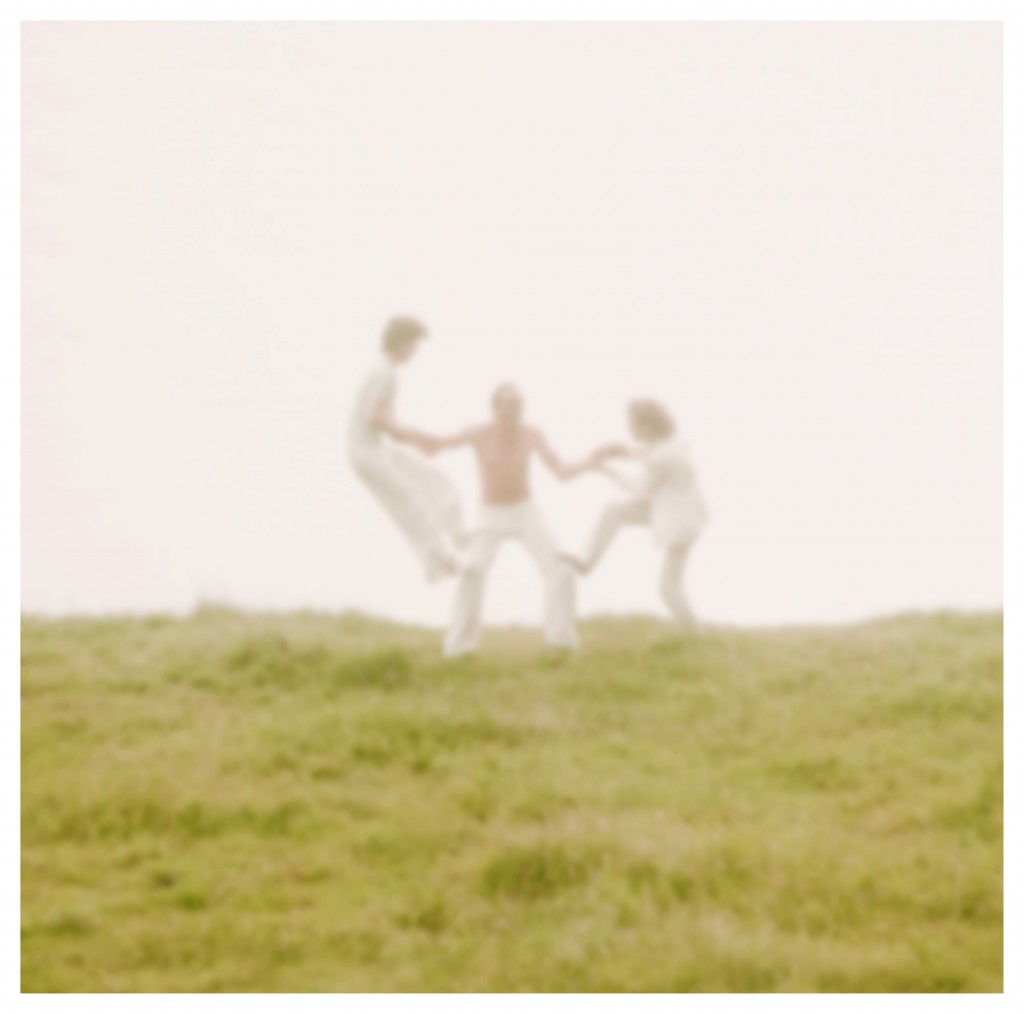Harmonia
Complete Work (Grönland Records)
Contact Jessica Linker about Harmonia
The story begins in 1971, when Moebius and Roedelius of Cluster moved from Berlin to the wilds of Forst, deep in the countryside of Lower Saxony, next to the Weser River. In Forst, they made their homes within three grand, crumbling houses built several centuries ago. Rother visited Forst in in early 1973. As he recalls, “When Klaus Dinger and I tried to put NEU! on stage in ’72 in Düsseldorf after releasing the first album, it was impossible to find the right musicians for touring because nobody understood our ideas. I remembered Cluster and their track ‘Im Süden,’ and because I saw similarities in the harmonic approach I decided to pay them a visit in Forst.” Rother brought his guitar along, and jammed with Roedelius. “The two instruments we played together immediately clicked, and so I decided to put NEU! on hold. Roedelius and Moebius were equally excited about the idea of the three of us working together and so six weeks later, I left Düsseldorf and NEU! behind and moved to Forst.”
Life in the rambling, rural environs of Forst was as much about surviving with little money as it was about making music. “It’s a very important part of the game that we were able to live at that place, in that beautiful island of silence and beauty, surrounded by cows and horses and geese and pigs,” says Roedelius. “Going to the forest and cutting wood and doing the gardens, that was part of it.” Indeed, the music of Harmonia is part and parcel of the lush landscape of Forst, and its communal spirit.
The differences in musical temperament between the three were clear from the outset. Rother was the only who had something resembling musical training. Moebius, meanwhile, had noisier, more anarchic inclinations. Roedelius was more overtly romantic and melodic, but his approach to making music had more in common with Moebius than with Rother.
Harmonia released their debut album, Musik von Harmonia, in 1974. They recorded and mixed the album themselves in Forst. “We had three [tape] machines, Revox type, and a very primitive mixer,” says Rother. “The advantage was we could work whenever we wanted and didn‘t have a studio clock ticking away. The record sales, however, were very disappointing, our love for the music was not echoed by the public.” The striking Pop Art cover of a detergent bottle, designed by Moebius, gave the band an instantly iconic and modern look.
Harmonia’s second album, Deluxe (1975), was co-produced by the brilliant producer and engineer Conny Plank, who had worked with NEU!, Cluster, Kraftwerk, and many other bands. Deluxe was recorded on Plank’s equipment in Forst in the summer of 1975, and mixed at his studio near Cologne soon afterwards. As described by Rother, “We didn‘t have to push [Conny] to experiment; we were all on the same level. Everybody was looking for new expressions, a new way of creating the sound . . . I remember some really wonderful moments, because he was so talented in picking up your ideas. We never theorized about music, we were intuitive players, musicians.” Deluxe is a breathtaking album, a clear departure in style. It was the most “pop” that Harmonia ever became, with tighter song structures than the more sprawling landscapes of Musik von Harmonia.
After struggling for months about the direction the music of Harmonia should take, Harmonia split up in 1976, but the group briefly reunited later that year to record in Forst with Eno. After the sessions with Eno, the group went their separate ways. Their music has inspired generations of musicians and these days it appeals to audiences, young and old, in a way Roedelius, Moebius und Rother couldn’t have imagined in the 1970s. Despite the differences, there was a shared vision with Harmonia, too. “We were all different individuals — that was clear from the beginning,” says Rother. “But we were similar in our wish for freedom: freedom in the way we chose to live, and in our wish to be independent from record companies and to live a free life.” Harmonia lives on as a document of that magical time in Forst.


